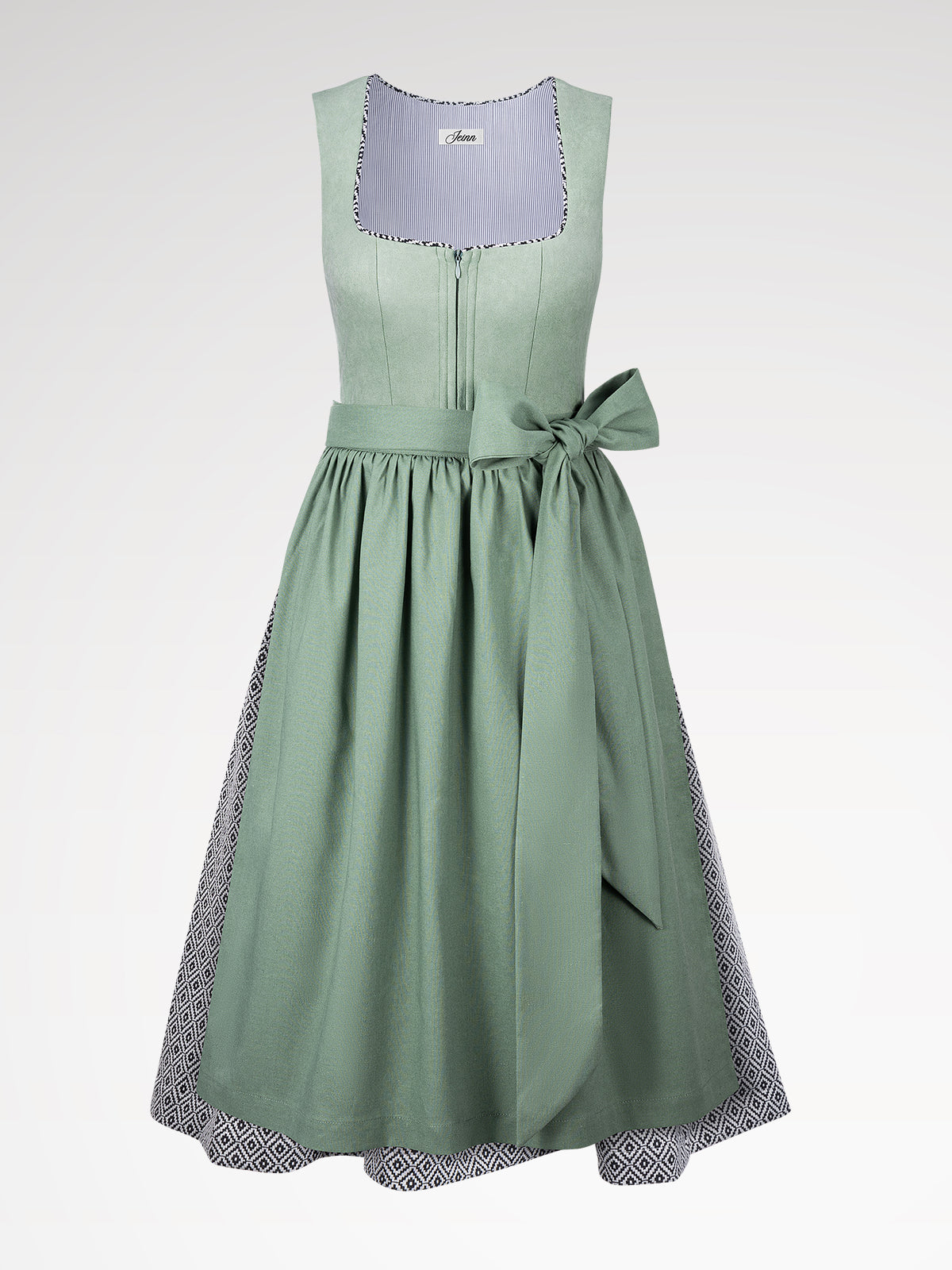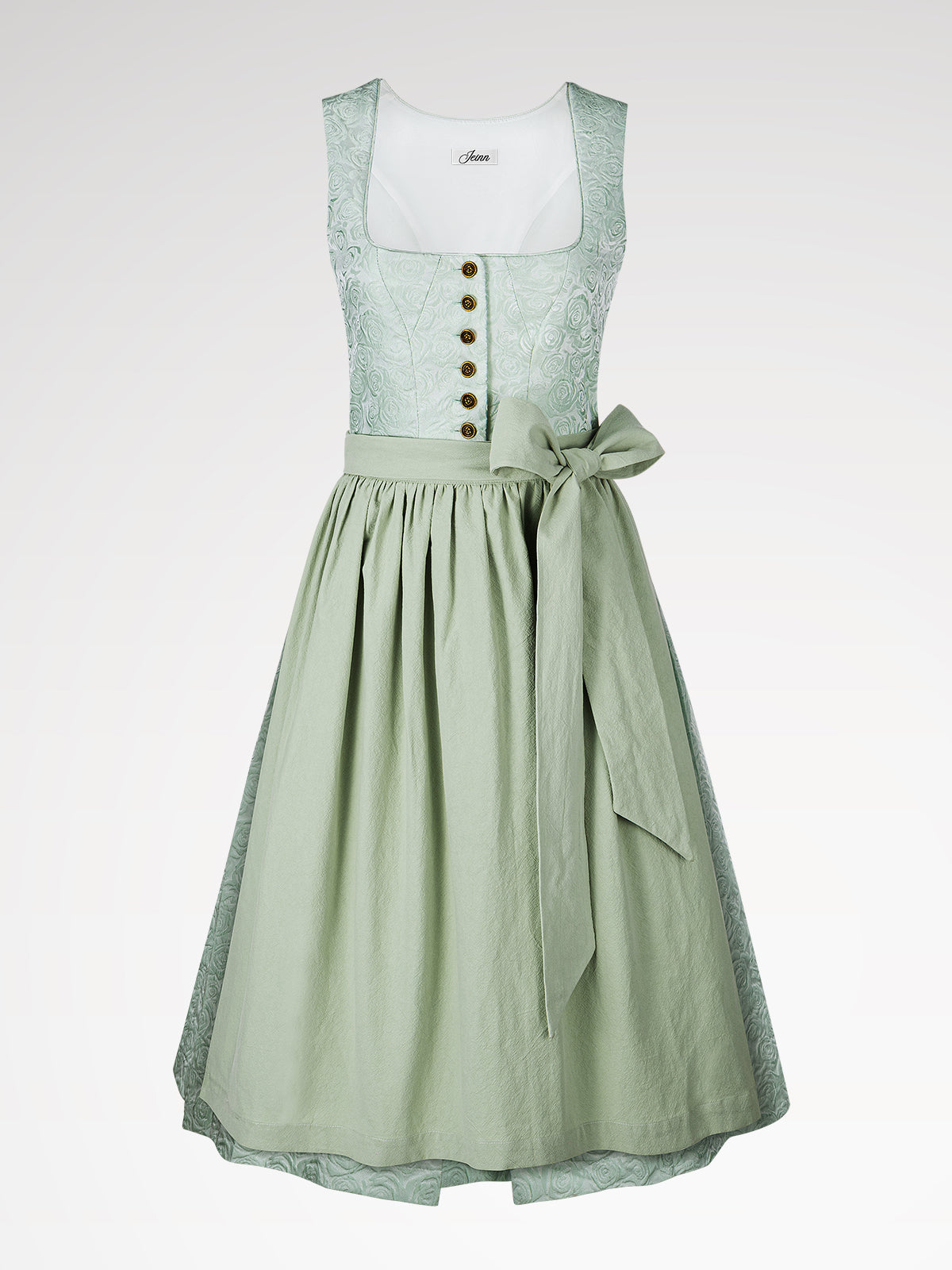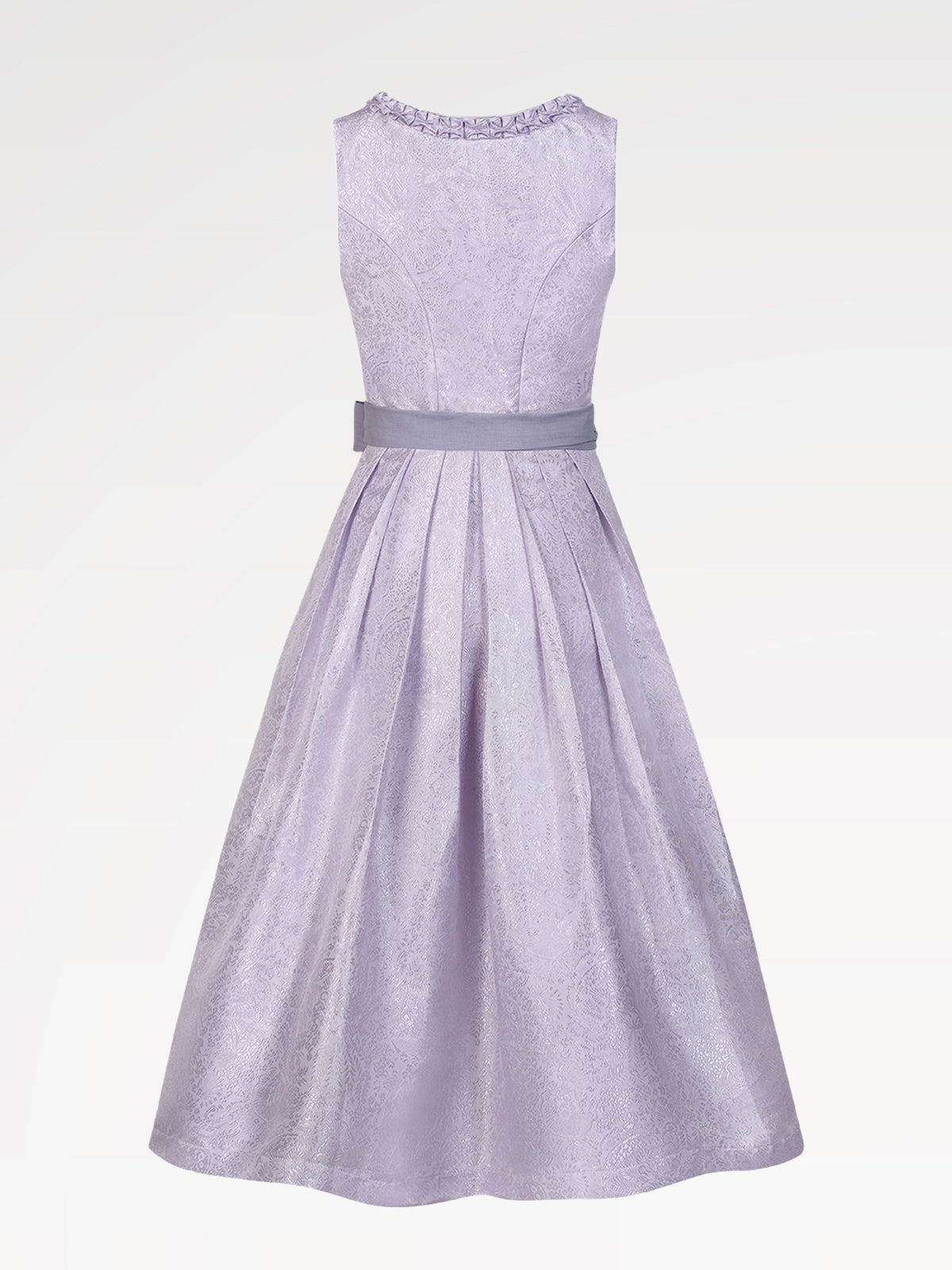German and Austrian traditional costume culture is a treasure trove of tradition, color, and craftsmanship. The 70 cm dirndl—the traditional garment with its characteristic length—is particularly significant in both countries. While in Bavaria, mint green dirndls in simple colors are mostly worn, the Austrian counterpart shines with luxurious green velvet dirndls and elaborate decorations. But what exactly distinguishes these two versions? And why is this so special? 70 cm dirndl Why is this length so much more popular in some regions than other lengths? This article takes you on a journey through the world of traditional costumes and shows how the green velvet dirndl is adapting to modern trends.
1. Historical roots: Where does the dirndl come from?
The 70 cm dirndl has its origins in the 19th century, when it served as practical workwear for peasant women in the Alpine regions. In Bavaria, it was usually worn in dark colors such as mint green or brown to conceal dirt. In Austria, however, the costume evolved more quickly, influenced by imperial fashion and regional embroidery traditions.
Surprising fact: While the Bavarian 70 cm dirndl was often considered a “worker’s dress,” in Austria it quickly became a status symbol – the more elaborate the decoration, the higher the social status of the wearer.
2. Colour world and material: Classic tones vs. luxury colours
The first striking difference is the color scheme. In Bavaria, the mint green dirndl predominates in fresh, natural tones, while in Austria, the green velvet dirndl shines with velvety, elegant colors like dark green or burgundy.
Why is that?
- In Bavaria, this symbolizes mint green dirndl Down-to-earthness and tradition.
- In Austria, the green velvet dirndl stands for elegance and the desire for special charisma.
Another difference lies in the fabric: Bavarian dirndls often use thicker wool fabrics, while Austrian versions often prefer green velvet dirndls with a velvety texture – ideal for festive occasions.
3. Cut and silhouette: Practical vs. glamorous
The Bavarian 70 cm dirndl follows a strict cut: a tight-fitting upper body, a short skirt, and an apron. The length of the skirt varies by region, but usually ends at exactly 70 cm—a classic standard length.
In Austria, however, there's more scope for individual design. Many green velvet dirndls offer fashionable variations with:
- Longer or shorter skirts
- Asymmetric hem lengths
- More modern cuts
A special feature of the Austrian dirndl is the decorated belt, which is not only decorative but also functional – it accentuates the waist and creates a feminine silhouette.
4. Embellishment and Embroidery: Simplicity vs. Splendor
While the Bavarian mint green dirndl is usually kept simple, with minimal decorations, the Austrian costume shines with elaborate embroidery in rose motifs. These are not only aesthetically pleasing but also a sign of masterful craftsmanship.
Interesting contrast:
- In Bavaria, the apron is often tied simply, while in Austria the type of knot (left = single, right = married) is more strictly observed.
- Austrian dirndls often have decorated straps or gold-plated buttons, making them true works of art.
5.The modern dirndl trend: online shopping and sustainability
The demand for velvet dirndl green is steadily increasing – especially through platforms like Etsy or local traditional costume boutiques. But what's the difference between buying in Germany and Austria?
- In Germany, traditional cuts are often preferred, with a focus on 70 cm dirndls in classic lengths.
- In Austria, there are more mint green dirndls and modern versions, often made with sustainable materials.
Tip: If you want to buy a green velvet dirndl, look for handmade pieces – they are not only unique but also more environmentally friendly.





Leave a comment
This site is protected by hCaptcha and the hCaptcha Privacy Policy and Terms of Service apply.